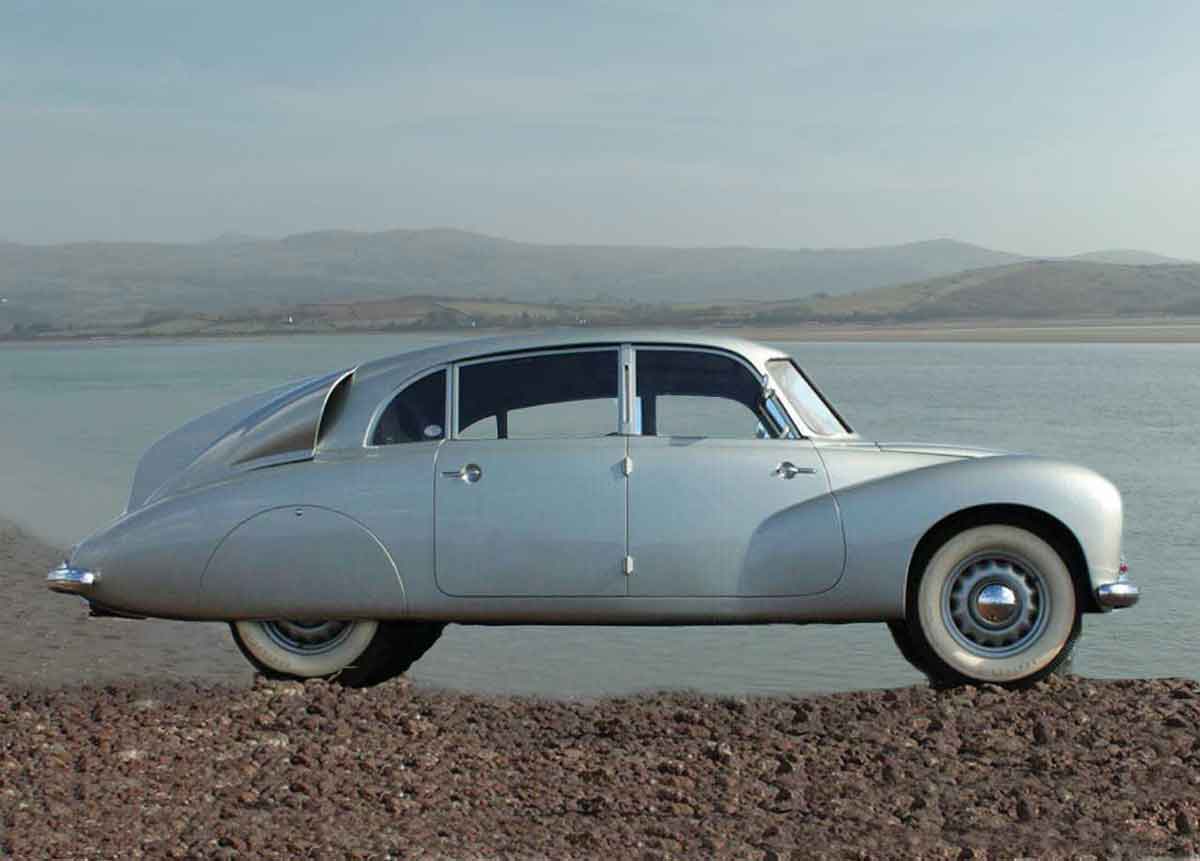30scars.co.uk
MenuTatra

Tatra 77
Tatra claims to be one of the longest established car manufacturers in the world, although there have been a few bumps along the way! It's ownership has changed a number of times including a nationalisation after World War II and a sale by auction owing to accumulated debts in 2013. Its current products include trucks for both military and civilian use.
The company that it originally grew from was first established way back in 1850 making horse-drawn wagons in what was then the Austro Hungarian Empire. The first car they ever produced in 1897, was called the 'Präsident', which was really a horse-drawn carriage in which the horse was substituted by a big 2750 cc twin cylinder four stroke engine. This may have just been a horseless carriage but it was a pretty luxurious one; it had a top speed of a dizzy 19 mph or so, had handlebars for steering and had two gears; one forward and one reverse.
Although this car would appear very primitive by today's standards it was pretty reliable and is still in existence today, although a number of parts including the engine have been changed.
Technology moved on however. By the 1930s Tatra (by then named after the nearby Tatra Mountains) had a reputation for producing luxurious cars and typically they were powered by large air cooled engines mounted at the rear of the car; a design concept that was allegedly copied by Ferdinand Porsche when he built his Volkswagen Beetle. It was perhaps not the best design for a car however as we will see later.
A gentleman named Paul Jaray had worked on streamlining airships, including the notorious Zeppelins, and Tatra bought a licence from him for the design of their Type 77. This was the first ever car to be built using aerodynamic principles and it was driven by a 3 litre V8 rear mounted air cooled engine which gave a maximum speed of 90 mph. Adolf Hitler loved it and insisted that Ferdinand Porsche modelled his Beetle on it; Tatra sued but when Germany invaded Czechoslovakia in 1938 their court case went into the dustbin. They soon had their revenge on the Germans however.
The type 77 was fast, comfortable and sleek. It was hand built with a very masculine leather interior. German officers loved it. Unfortunately the design had a major fault which soon became apparent as these officers began to die in large numbers because they lost control of the cars when they drove quickly around bends. The problem was that the heavy engine at the back of the car would cause the rear end of it to break away resulting in massive oversteer and the loss of control by the driver.
After scores of deaths Hitler banned his officers from driving Tatras from then on. The car became known as Czechoslovakia's secret weapon and it was rumoured that more German officers were killed by them than died in combat at the time! Whatever the truth, production ended in 1938 with a total of around 250 cars made, and it was eventually succeeded by the Tatra 87, with improved – although still by no means perfect – handling characteristics